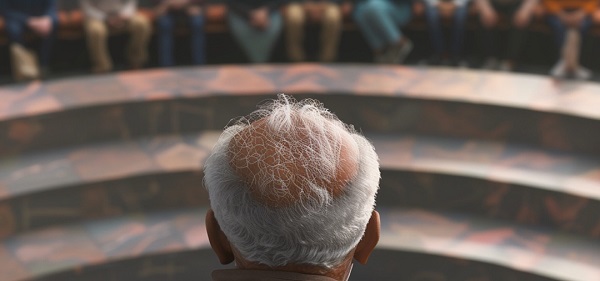COVID-19
British MP Andrew Bridgen gives powerful speech on ‘scandal’ of excess deaths after COVID jab rollout
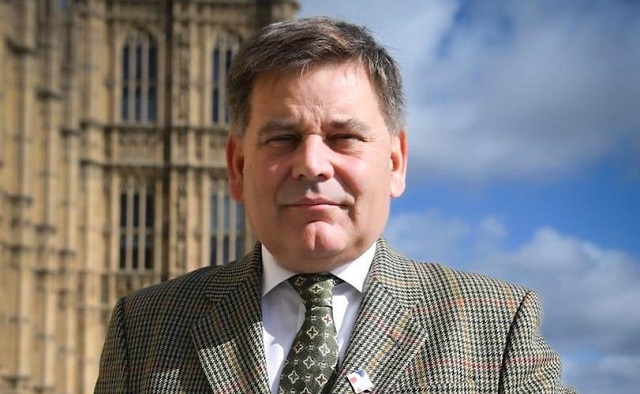
MP Andrew Bridgen
From LifeSiteNews
By Frank Wright
British MP Andrew Bridgen called for an immediate suspension of ‘all mRNA treatments in both humans and animals,’ saying that excess deaths in 2022 and 2023 was ‘the greatest medical scandal in this country in living memory, and possibly ever.’
With three years of excess deaths still mysteriously unexplained, Dr. John Campbell devoted an entire video to a House of Commons debate on what MP Andrew Bridgen has called the “greatest medical scandal in this country in living memory.”
Introducing Bridgen as “a hero of the people,” Campbell’s report from April 18 shows footage of the “COVID-19: Response and Excess Deaths” debate of the same day.
Led by MP Andrew Bridgen, who was expelled from the Conservative Party for his outspoken criticism of the so-called vaccines and the political culture which enabled the disastrous lockdown measures, the opening speech was heard by a mere handful of MPs in a largely empty chamber.
His full speech can also be viewed here on the U.K. Parliament website, beginning at 14:33:21.
The public gallery was packed, however, with Bridgen’s summary call for the government “to immediately suspend the use of all mRNA treatments in both humans and animals” met with resounding cheers and applause.
Bridgen opened with a denunciation of a scandal whose dimensions he explored with forensic detail.
We are witnesses to the greatest medical scandal in this country in living memory, and possibly ever: the excess deaths in 2022 and 2023. Its causes are complex, but the novel and untested medical treatment described as a COVID vaccine is a large part of the problem.
The independent MP warned of the verdict of history on the actions of a government which had “gaslit” its people into compliance.
Future generations, who will be genuinely agog that the evidence has been ignored for so long, that genuine concerns were disregarded, and that those raising them were gaslit, smeared, and vilified.
The scandal of excess deaths, which the U.K. and other governments still refuse to connect to the “safe and effective” mRNA injections, is one dimension of a politically charged culture of silence, says Bridgen.
Data hidden
Noting that he is one of the few members of Parliament with a science degree, he said:
One does not need any science training at all to be horrified by officials deliberately hiding key data in this scandal, which is exactly what is going on.
He went on to recount how data on excess deaths was being withheld from the public, and had now been recalibrated to downplay the figures.
The public are being denied that data, which is unacceptable; yet again, data is hidden with impunity.
He notes how Professor Jenny Harries, the U.K. Health Security Agency chief, has “said that this anonymized, aggregate death by vaccination status data is “commercially sensitive” and should not be published.”
Bridgen records how “Professor Harries has also endorsed a recent massive change to the calculation of the baseline population level used by the ONS to calculate excess deaths.”
Data model changed
This new model is “now incredibly complex and opaque,” he claimed, “and by sheer coincidence, it appears to show a massive excess of deaths in 2020 and 2021 and minimal excess deaths in 2023.”
The implication is that the modeling has been altered to suit the narrative, which routinely denies any connection between the “vaccine” rollouts and excess deaths, as well as soaring heart conditions and rising cases of aggressive cancers.
Yet the “old calculation method, tried and tested for decades” showed “the [U.K.] excess death rate in 2023 was an astonishing 5 percent.”
Bridgen points out that these deaths came “long after the pandemic was over, at a time when we would expect a deficit in deaths because so many people had sadly died in previous years.”
Due to Harries’ changes in data capture, he said, “some 20,000 premature deaths in 2023 alone are now being airbrushed away through the new normal baseline.”
Harries attracted derision for her claim that 2,800 excess deaths over the summer of 2022 were due to climate change.
Safe and effective?
Earlier that day, Bridgen had called on Parliament to compel the ongoing COVID-19 inquiry to investigate directly the claim that the so-called vaccines, were “safe and effective.”
He said, “I asked the house to support the motion today for Baroness Hallet’s inquiry to open module four on the safety and efficacy of the experimental COVID-19 vaccines.”
This inquiry has lately been criticized by a group of U.K. public health scholars and academics for its lack of impartiality. The signatories include Oxford zoology Professor Sunetra Gupta, infectious medicine specialist Dr. Kevin Bardosh of Edinburgh University, and over 50 others including legal, sociological, and medical experts.
TikTok dance of death
In their March 12 open letter published on the website Collateral Global, it is claimed that “the [COVID] inquiry is not living up to its mission to evaluate the mistakes made during the pandemic,” being “fundamentally biased” in its “preferential treatment to scientific advisers … who have a vested interest in maintaining the justification for their policy recommendations.”
[T]he format of the Inquiry is impeding investigation into the key scientific and policy questions.
These policy questions include the confusing means by which deaths were recorded, alongside the further scandal of “iatrogenic deaths” – caused by medical intervention. The use of drugs which restricted breathing, such as morphine and midazolam, was condemned by Bridgen.
“The result is that people died who didn’t need to die while nurses performed TikTok dances,” he said.
Death by medical protocol
Pointing out that “the body clears all the viruses within around seven days,” Bridgen noted “very few people will know that the average time to death from COVID symptoms and testing positive was 18 days.”
He says this is due to the fact that “doctors abandoned the standard clinical protocols.”
Instead of using former antibiotic and steroid treatments, he says, “they sent people home … then when they returned to the hospital, they sedated them, put them on ventilators and would watch them die.”
Bridgen says this was done due to new “protocols for COVID-19 treatment” – which have now been deleted from the public record.
“The body responsible for this protocol (NG1 163) is called the National Institute for Health and Care Excellence – NICE.”
Bridgen says that a key passage – recommending the use of the respiratory depressant midazolam – had been removed from the updated guidelines.
Can the minister explain why midazolam was then removed from the same updated guideline on the 30th of November 2023?
His next question was one which no one in government has been willing to answer.
If legal cases are brought for unlawful killing – can the minister tell us who’s going to be taking the blame?
Will it be NICE? Will it be NHS England – or will it be the individual doctors and nurses who will be held to account?
A cover-up?
Suggesting a cover-up of deaths which contributed to the excess seen in the lockdown period, Bridgen pointed out, “NICE has now removed these alternative protocols including NG1 163 from their website, although every other historic protocol is still there.”
Could the minister tell us why they have removed this protocol from their website?
Are they ashamed of the harm that they caused? They certainly should be.
Bridgen went on to note the contrast in recording “deaths and illnesses” after vaccination compared to those attributed to COVID.
There’s a huge stark contrast in how deaths and illnesses after vaccination have been recorded compared to COVID.
He said:
After a positive COVID test any illness and any death was attributed to the virus, [whereas] … after the experimental emergency use vaccine was administered, no subsequent illness and no death was ever attributed to the vaccine.
Recalling the mantra that governments were “following the science,” Bridgen added that “these are both completely unscientific approaches and that’s why we have to look at other sources of data excess deaths to determine if there is an issue.”
Noting that the notorious drug Thalidomide was also once described as “safe and effective,” he demanded rules be put in place to prevent the “government and other authorities” becoming the “Big Pharma’s marketing department,” as he claims it was under the COVID regime.
‘They knew’
Citing the millions of pounds paid to the vaccine-injured and the fact that the prime minister himself could not defend the “safe and effective” claim when it was put to him personally, Bridgen stated that “those who imposed these vaccines knew very well that they could never prevent infections from a disease of this kind.”
Referring to data from Australia, he stressed the unwillingness of governments to make the obvious connection between excess death, heart injuries, and cancer rates with the “novel mRNA vaccines.”
Calls for a ban
He closed with an appeal which condemned the fact the injections contained DNA and disrupted that of the host receiving the injections, also against former assurances to the contrary.
Madam Deputy speaker the evidence is clear: these vaccines have caused deaths … serious harm and they will have raised the risk of cancer to many more.
I ask the House – it’s time to take the politics out of our science and … to put some actual science back into our politics.
With this, he called for an immediate ban on the experimental treatments.
I call on the government once again to immediately suspend the use of all mRNA treatments in both humans and animals.
The science ‘was not followed’
One of only 12 other MPs in the almost empty chamber, Sir Christopher Chope, spoke in support of Bridgen’s call, which was met with resounding cheers from the public gallery. The speaker threatened to clear the public gallery, saying “the clapping must stop.”
Graham Stringer, Labour MP for Blackley and Broughton, is one of those few MPs with a scientific background. He said the claim made by the U.K. government and others to be “following the science” was simply false.
The science was not followed.
Stringer cites the change in public health advice, which contradicted earlier statements by public health officials such as the government’s chief scientific adviser, Sir Patrick Vallance, and the government’s chief medical adviser, Chris Whitty.
If you go back and look at the early statements, you will see … people from the NHS, Patrick Vallance and Chris Whitty saying masks were a waste of time and that lockdowns were ineffective.
The U.K.’s Independent reported in March 2020 that “[c]hief medical officer tells public not to wear masks – Chris Whitty instead advises people to regularly wash their hands.”
He told Sky News in an interview that “wearing a face mask if you don’t have an infection … really reduces the risk almost not at all.”
"Wearing a mask if you don't have an infection reduces the risk almost not at all."
Chris Whitty tells @KayBurley the only people advised to wear masks are those with an infection to prevent further spread.#KayBurley
Get the latest on #coronavirus: https://t.co/NdI5p1vKfk pic.twitter.com/GZNFsfKcfy
— Sky News (@SkyNews) March 4, 2020
Stringer says, “That advice changed very quickly under political pressure.”
If this pressure did not come from following the science, where did it come from?
The U.K. government now appears to be following a policy of silence, given its own COVID inquiry in 2023 confirmed that the government knew that there was “no point” to wearing masks, which had “very little effect on the spread on [sic] COVID.”
Evidence was submitted from a government official at the prime minister’s residence, Number 10 Downing St., in February 2023. Parties at Number 10 during lockdown were captured on film.
Junior Downing St official:
"Wine Time Fridays continued throughout, social distancing not enforced, mask wearing not enforced…wider culture of not adhering to any rules.
"No.10 was like an island oasis of normality"Following rules for the cameras, continuing as normal inside pic.twitter.com/7rabZp9NM8
— Tristan Kirk (@kirkkorner) June 15, 2023
In his own diaries, Vallance himself condemned the then Scottish First Minister Nicola Sturgeon’s decision to mandate mask-wearing in schools as a “totally political” decision, according to a Daily Telegraph report from March 12. According to him, the decision was “not based on medical advice.”
It was instead a result of her political ambition to present a policy distinct from that in England to fortify a renewed call for Scottish independence.
It is obvious that political pressure has played a role in shaping the lockdown era. It is also now apparent that the obvious is excluded from the news, with governments still refusing to acknowledge any connection between the novel mRNA treatments and the entirely predictable side effects seen in the vaccine-injured and the otherwise inexplicable rate of excess deaths.
If you want to know where the truth of the matter lies, just follow the silence. It’s not coming from the public gallery.
COVID-19
Trump DOJ seeks to quash Pfizer whistleblower’s lawsuit over COVID shots

From LifeSiteNews
The Justice Department attorney did not mention the Trump FDA’s recent admission linking the COVID shots to at least 10 child deaths so far.
The Trump Department of Justice (DOJ) is attempting to dismiss a whistleblower case against Pfizer over its COVID-19 shots, even as the Trump Food & Drug Administration (FDA) is beginning to admit their culpability in children’ s deaths.
As previously covered by LifeSiteNews, in 2021 the BMJ published a report on insider information from a former regional director of the medical research company Ventavia, which Pfizer hired in 2020 to conduct research for the company’s mRNA-based COVID-19 shot.
The regional director, Brook Jackson, sent BMJ “dozens of internal company documents, photos, audio recordings, and emails,” which “revealed a host of poor clinical trial research practices occurring at Ventavia that could impact data integrity and patient safety […] We also discovered that, despite receiving a direct complaint about these problems over a year ago, the FDA did not inspect Ventavia’s trial sites.”
According to the report, Ventavia “falsified data, unblinded patients, employed inadequately trained vaccinators, and was slow to follow up on adverse events reported in Pfizer’s pivotal phase III trial.” Overwhelmed by numerous problems with the trial data, Jackson filed an official complaint with the FDA.
Jackson was fired the same day, and Ventavia later claimed that Jackson did not work on the Pfizer COVID-19 shot trial; but Jackson produced documents proving she had been invited to the Pfizer trial team and given access codes to software relating to the trial. Jackson filed a lawsuit against Pfizer for violating the federal False Claims Act and other regulations in January 2021, which was sealed until February 2022. That case has been ongoing ever since.
Last August, U.S. District Judge Michael Truncale dismissed most of Jackson’s claims with prejudice, meaning they could not be refiled. Jackson challenged the decision, but the Trump DOJ has argued in court to uphold it, Just the News reports, with DOJ attorney Nicole Smith arguing that the case concerns preserving the government’s unfettered power to dismiss whistleblower cases.
The rationale echoes a recurring trend in DOJ strategy that Politico described in May as “preserving executive power and preventing courts from second-guessing agency decisions,” even in cases that involve “backing policies favored by Democrats.”
Jackson’s attorney Warner Mendenhall responded that the administration “really sort of made our case for us” in effectively admitting that DOJ is taking the Fair Claims Act’s “good cause” standard for state intervention to mean “mere desire to dismiss,” which infringes on his client’s “First Amendment right to access the courts, to vindicate what she learned.”
Mendenhall added that in a refiled case, Jackson “may be able to bring a very different case along the same lines, but with the additional information” to prove fraud, whereas rejection would send the message that “if fraud involves government complicity, don’t bother reporting it.”
That additional information would presumably include the FDA’s recent admission that at least 10 children the agency has reviewed so far “died after and because of receiving COVID-19 vaccination.”
“The truth is we do not know if we saved lives on balance,” admitted FDA Chief Medical Officer Vinay Prasad in a recent leaked email. “It is horrifying to consider that the U.S. vaccine regulation, including our actions, may have harmed more children than we saved. This requires humility and introspection.”
The COVID shots have been highly controversial ever since the first Trump administration’s Operation Warp Speed initiative prepared and released them in a fraction of the time any previous vaccine had ever been developed and tested. As LifeSiteNews has extensively covered, a large body of evidence has steadily accumulated over the past five years indicating that the COVID jabs failed to prevent transmission and, more importantly, carried severe risks of their own.
Ever since, many have intently watched and hotly debated what President Donald Trump would do about the situation upon his return to office. Though he never backed mandates like former President Joe Biden did, for years Trump refused to disavow the shots to the chagrin of his base, seeing Operation Warp Speed as one of his crowning achievements. At the same time, during his latest run he embraced the “Make America Healthy Again” movement and its suspicion of the medical establishment more broadly.
So far, Trump’s second administration has rolled back several recommendations for the shots but not yet pulled them from the market, despite hiring several vocal critics of the COVID establishment and putting the Department of Health & Human Services under the leadership of America’s most prominent anti-vaccine advocate, Robert F. Kennedy Jr. Most recently, the administration has settled on leaving the current jabs optional but not supporting work to develop successors.
In a July interview, FDA Commissioner Marty Makary asked for patience from those unsatisfied by the administration’s handling of the shots, insisting more time was needed for comprehensive trials to get more definitive data.
COVID-19
Canadian Health Department funds study to determine effects of COVID lockdowns on children

From LifeSiteNews
The commissioned study will assess the impact on kids’ mental well-being of COVID lockdowns and ‘remote’ school classes that banned outdoor play and in-person learning.
Canada’s Department of Health has commissioned research to study the impact of outdoor play on kids’ mental well-being in light of COVID lockdowns and “remote” school classes that, for a time, banned outdoor play and in-person learning throughout most of the nation.
In a notice to consultants titled “Systematic Literature Reviews And Meta Analyses Supporting Two Projects On Children’s Health And Covid-19,” the Department of Health admitted that “Exposure to green space has been consistently associated with protective effects on children’s physical and mental health.”
A final report, which is due in 2026, will provide “Health Canada with a comprehensive assessment of current evidence, identify key knowledge gaps and inform surveillance and policy planning for future pandemics and other public health emergencies.”
Bruce Squires, president of McMaster Children’s Hospital of Hamilton, Ontario, noted in 2022 that “Canada’s children and youth have borne the brunt” of COVID lockdowns.
From about March 2020 to mid-2022, most of Canada was under various COVID-19 mandates and lockdowns, including mask mandates, at the local, provincial, and federal levels. Schools were shut down, parks were closed, and most kids’ sports were cancelled.
Mandatory facemask polices were common in Canada and all over the world for years during the COVID crisis despite over 170 studies showing they were not effective in stopping the spread of COVID and were, in fact, harmful, especially to children.
In October 2021, then-Prime Minister Justin Trudeau announced unprecedented COVID-19 jab mandates for all federal workers and those in the transportation sector, saying the un-jabbed would no longer be able to travel by air, boat, or train, both domestically and internationally.
As reported by LifeSiteNews, a new report released by the Justice Centre for Constitutional Freedoms (JCCF) raised alarm bells over the “harms caused” by COVID-19 lockdowns and injections imposed by various levels of government as well as a rise in unexplained deaths and bloated COVID-19 death statistics.
Indeed, a recent study showed that COVID masking policies left children less able to differentiate people’s emotions behind facial expressions.
COVID vaccine mandates and lockdowns, which came from provincial governments with the support of the federal government, split Canadian society.
-
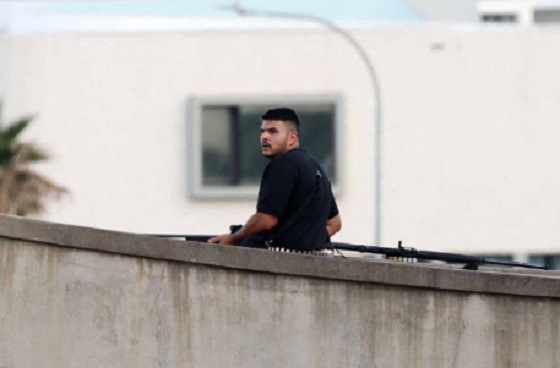
 Crime7 hours ago
Crime7 hours agoTerror in Australia: 12 killed after gunmen open fire on Hanukkah celebration
-

 Energy2 days ago
Energy2 days agoCanada’s future prosperity runs through the northwest coast
-

 Business14 hours ago
Business14 hours agoInflation Reduction Act, Green New Deal Causing America’s Energy Crisis
-

 Business24 hours ago
Business24 hours agoFuelled by federalism—America’s economically freest states come out on top
-
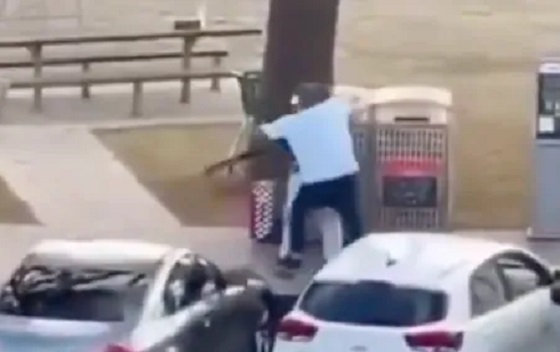
 Crime7 hours ago
Crime7 hours agoHero bystander disarms shooter in Australian terror attack
-
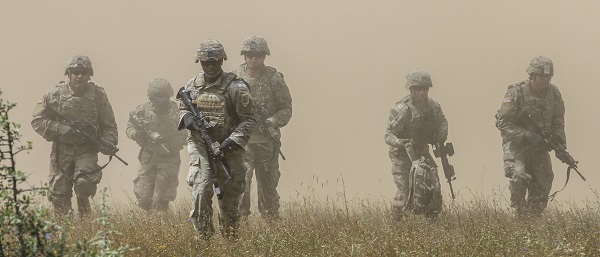
 Daily Caller23 hours ago
Daily Caller23 hours ago‘There Will Be Very Serious Retaliation’: Two American Servicemen, Interpreter Killed In Syrian Attack
-
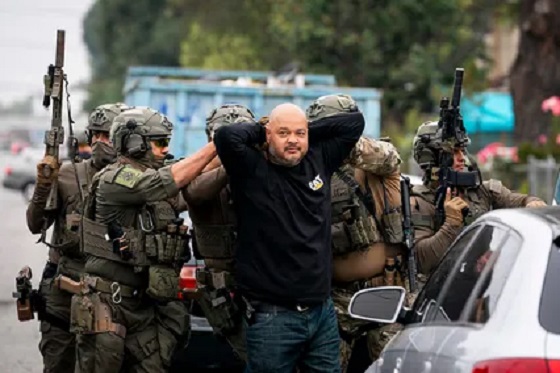
 illegal immigration1 day ago
illegal immigration1 day agoUS Notes 2.5 million illegals out and counting
-

 Automotive1 day ago
Automotive1 day agoPoliticians should be honest about environmental pros and cons of electric vehicles

